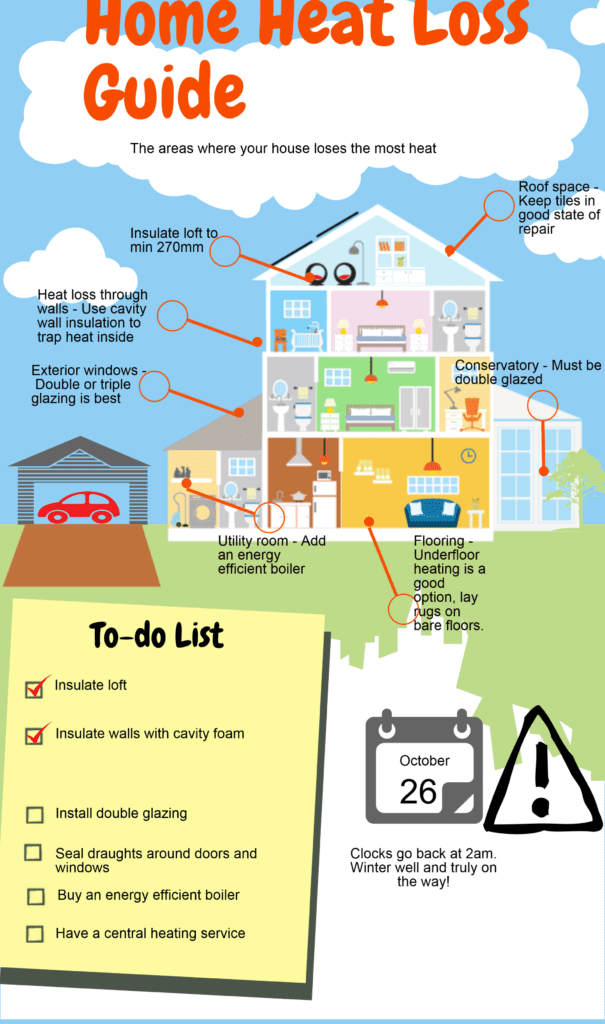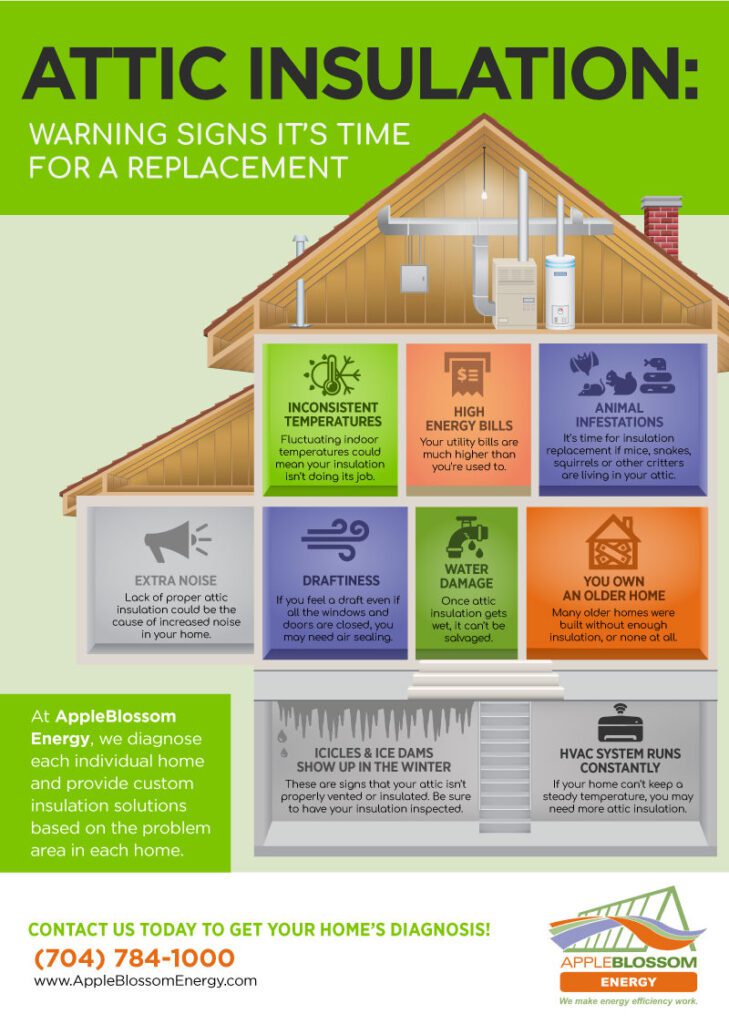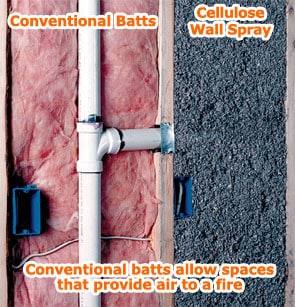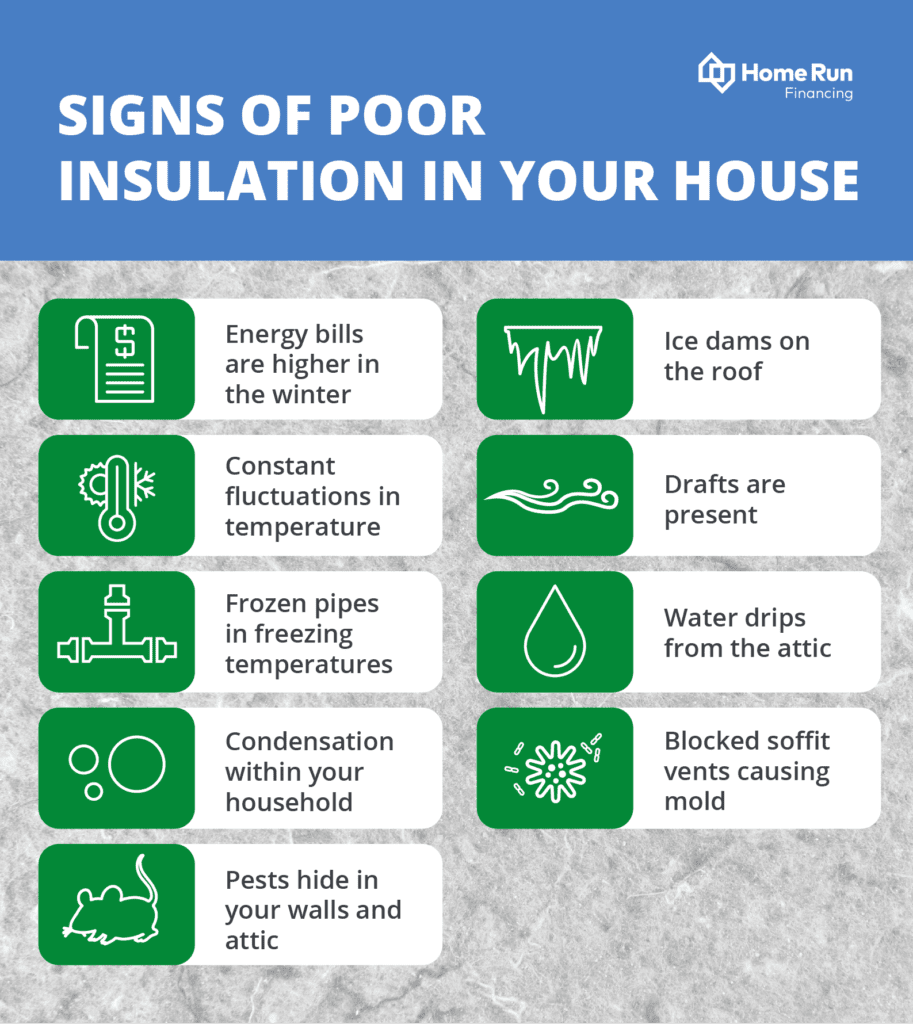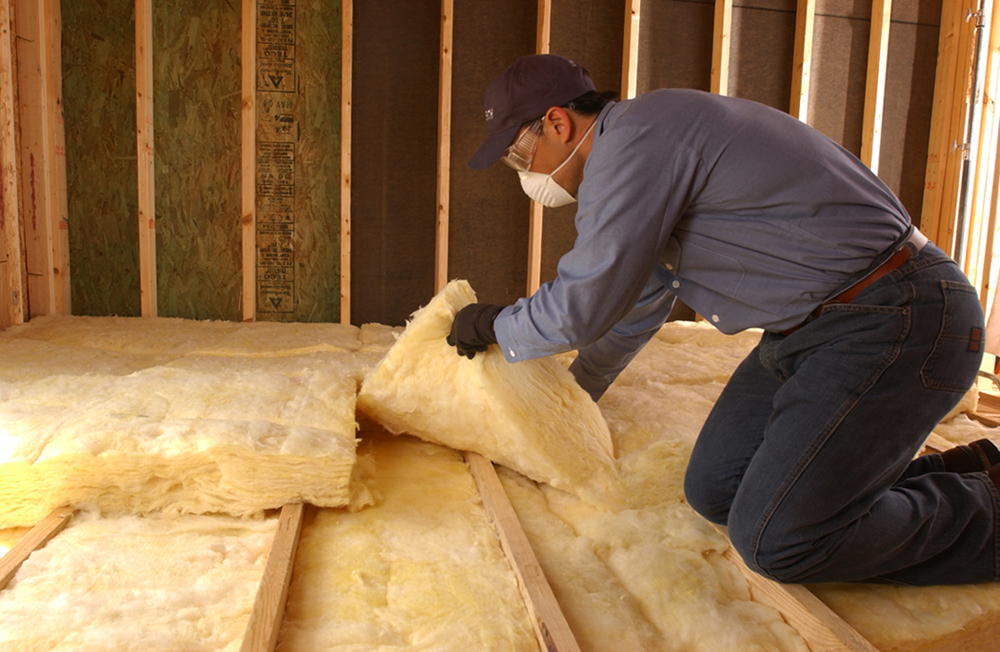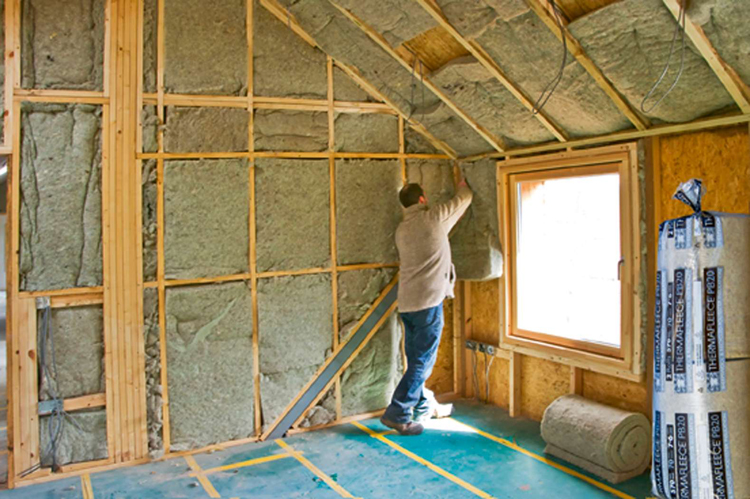Did you know that the lifespan of insulation can significantly impact the efficiency and comfort of your home? Understanding how long insulation lasts is crucial for homeowners looking to maintain a comfortable living environment while saving on energy costs. In this article, we will explore the average lifespan of insulation materials and provide some tips on how to determine if your insulation needs to be replaced. So, let’s dive into the world of insulation and discover how many years it can truly last!


Factors That Affect the Lifespan of Insulation
Insulation plays a crucial role in maintaining energy efficiency and comfort within buildings. However, the lifespan of insulation can vary depending on several factors. By understanding these factors, you can make informed decisions when it comes to choosing, installing, and maintaining insulation in your home or building.
Type of Insulation Material
The type of insulation material used is a significant factor in determining its lifespan. Different insulation materials have varying levels of durability and resistance to wear and tear. For example, fiberglass insulation is known for its longevity, often lasting for several decades. On the other hand, cellulose insulation tends to have a shorter lifespan compared to other materials. It is important to research and choose an insulation material that best suits your specific needs and offers a long-lasting performance.
Environmental Conditions
The environmental conditions surrounding the insulation can greatly impact its lifespan. Extreme temperatures, high humidity levels, and excessive moisture can all contribute to the deterioration of insulation over time. For instance, in areas with high humidity, insulation materials like cellulose or fiberglass can be at a higher risk of moisture damage and mold growth. Understanding the specific climate and environmental conditions in your region can help you choose insulation materials that are better suited to withstand these conditions and have a longer lifespan.
Installation Quality
The quality of the insulation installation can significantly affect its lifespan. Improper installation techniques or shortcuts during the installation process can lead to gaps, voids, or inadequate coverage, which can reduce the effectiveness and longevity of the insulation. It is crucial to hire a professional insulation contractor who has the expertise and experience to properly install the insulation according to industry standards. Investing in a quality installation can help ensure that the insulation performs optimally and has a longer lifespan.
Maintenance and Upkeep
Regular maintenance and upkeep of insulation can extend its lifespan. Insulation should be periodically inspected for any signs of damage, moisture accumulation, or pest infestations. Promptly addressing any issues can prevent further deterioration and ensure the insulation continues to provide its intended benefits. Additionally, ensuring that the insulation is well-sealed and protected from air leaks can also help maintain its effectiveness and prolong its lifespan.
Building Usage and Occupancy
The way a building is used and occupied can impact the lifespan of insulation. Buildings that experience high levels of activity, such as commercial spaces or busy households, may subject the insulation to more wear and tear. Increased foot traffic, constant movement of furniture, and accidental impacts can all lead to physical damage to the insulation. Choosing more durable insulation materials or considering additional protective measures in high-traffic areas can help mitigate these factors and increase the lifespan of the insulation.
Moisture and Water Exposure
Moisture and water exposure are common causes of insulation deterioration. When insulation becomes wet or damp, it can lose its insulating properties and become a breeding ground for mold and mildew. This can significantly shorten its lifespan and pose health risks. Proper moisture management, such as addressing plumbing leaks, improving drainage systems, and installing vapor barriers, can help prevent moisture-related damage and preserve the lifespan of the insulation.
Pest Infestations
Pest infestations, such as rodents or insects, can wreak havoc on insulation. They can chew through and nest in the insulation material, leading to damage and loss of insulating effectiveness. Regular pest control measures and proper sealing of gaps and openings can help prevent infestations and protect the integrity and lifespan of the insulation.
Physical Damage
Physical damage to insulation can occur due to various reasons, including accidental impacts, improper handling during construction or renovation, or even natural disasters. Insulation that has been physically damaged may have compromised thermal performance and a shortened lifespan. Taking precautions to protect the insulation during construction or renovations, and promptly repairing any physical damage, can help ensure the insulation’s longevity.
Age and Wear
Like any building material, insulation will naturally age and wear over time. The older the insulation, the more likely it is to have diminished performance and an increased risk of deterioration. Regular inspections and assessments can help identify signs of aging and wear, allowing for timely repairs or replacement to maintain the insulation’s effectiveness and prolong its lifespan.
Energy Efficiency Standards
Advancements in energy efficiency standards and building codes can also influence the lifespan of insulation. As technology improves and new insulation materials and techniques are introduced, older insulation materials may become outdated and less effective. Upgrading to insulation materials that meet current energy efficiency standards can help ensure optimal performance and a longer lifespan for the insulation.
Expected Lifespan of Different Insulation Materials
The expected lifespan of insulation materials can vary depending on their composition and quality. Here are some common insulation materials and their average lifespans:
Fiberglass Insulation
Fiberglass insulation is one of the most popular and long-lasting insulation materials. When installed properly, fiberglass insulation can last for up to 50 years or more. Its durability and resistance to pests, moisture, and fire make it an excellent choice for long-term insulation needs.
Cellulose Insulation
Cellulose insulation, typically made from recycled paper products, has a slightly shorter lifespan compared to fiberglass. On average, cellulose insulation can last for around 20 to 30 years. However, factors such as moisture exposure and pest infestations can significantly reduce its lifespan if not properly managed.
Spray Foam Insulation
Spray foam insulation is known for its superior insulation properties and durability. When applied correctly, spray foam insulation can last for several decades. Its ability to adhere tightly to surfaces and provide an airtight seal contributes to its long lifespan.
Mineral Wool Insulation
Mineral wool insulation, made from natural or recycled materials, has a lifespan similar to fiberglass insulation. With proper installation and maintenance, mineral wool insulation can easily last for 50 years or more.
Polyurethane Foam Insulation
Polyurethane foam insulation is highly durable and has a long lifespan. When professionally installed, polyurethane foam insulation can last for 30 to 50 years or more. Its resistance to moisture, pests, and aging makes it a reliable choice for long-term insulation needs.
Radiant Barrier Insulation
Radiant barrier insulation, often used in hot climates, has a lifespan comparable to other insulation materials. With proper installation and maintenance, radiant barrier insulation can last for several decades, providing efficient heat reflection and energy savings.
Reflective Insulation
Reflective insulation, commonly used in attics and crawl spaces, also has a long lifespan. When properly installed and protected from physical damage, reflective insulation can last for 20 to 40 years or more.
Loose-Fill Insulation
Loose-fill insulation, such as blown-in fiberglass or cellulose, can have a lifespan similar to their respective materials. Proper installation and regular maintenance can ensure that loose-fill insulation lasts for several decades.
Rigid Foam Insulation
Rigid foam insulation, known for its high insulating value, is incredibly durable and long-lasting. When installed correctly and protected from physical damage, rigid foam insulation can last for 50 years or more.
Cotton Insulation
Cotton insulation, typically made from recycled denim, has a similar lifespan to other fibrous insulations like cellulose or fiberglass. With proper installation and maintenance, cotton insulation can last for up to 30 years.
It is important to note that these are general average lifespans, and actual lifespans can vary depending on various factors such as installation quality, environmental conditions, and maintenance practices.


Common Signs of Insulation Deterioration
While insulation materials are designed to last for extended periods, they can still deteriorate over time. Being aware of the signs of insulation deterioration can help you identify potential issues and address them promptly to prevent further damage or energy loss.
Increased Energy Bills
One of the most common signs of insulation deterioration is a sudden or gradual increase in energy bills. If your heating or cooling costs have significantly risen, it could indicate that your insulation is no longer performing effectively and needs attention.
Drafts and Cold Spots
If you notice persistent drafts or cold spots in certain areas of your home or building, it may be a sign that your insulation is compromised. Gaps or voids in the insulation can allow air leaks, leading to inconsistent temperature distribution and reduced indoor comfort.
Uneven Temperature Distribution
Insulation deterioration can result in uneven temperature distribution throughout the building. Certain rooms or areas might feel significantly hotter or colder than others, indicating insulation issues that need to be addressed.
Mold and Mildew Growth
The presence of mold or mildew on walls, ceilings, or in the attic is a clear indication of moisture-related problems. Moisture accumulation within the insulation can lead to mold growth and pose health risks. If you notice any signs of mold or mildew, it is essential to address the underlying insulation issues promptly.
Visible Damage or Disintegration
Physical damage to insulation, such as visible tears, disintegration, or crumbling, is an obvious sign of deterioration. Damage can occur due to various factors, including pest infestations, moisture exposure, or age-related wear and tear. Insulation in such conditions should be repaired or replaced to maintain its effectiveness.
Pest Infestations
Pest infestations, such as rodents or insects, can damage insulation by nesting and chewing through the material. If you notice signs of pests, such as droppings, chewing marks, or unfamiliar sounds, it is crucial to inspect the insulation and take appropriate measures to address the infestation.
Moisture Accumulation
Excessive moisture accumulation within the insulation can result in significant damage and reduce its lifespan. Signs of moisture-related problems include water stains, dampness, or a musty odor. Identifying and rectifying the source of moisture is essential to prevent further damage and preserve the integrity of the insulation.
Reduced Soundproofing
Insulation not only helps with energy efficiency but also plays a role in soundproofing. If you notice a decrease in sound insulation, such as increased noise levels from outside or between rooms, it may indicate that the insulation has deteriorated or been damaged.
Decreased Indoor Air Quality
Deteriorating insulation can contribute to reduced indoor air quality. As insulation ages or becomes damaged, it can release particles into the air, impacting the overall air quality and potentially leading to health issues. If you notice an increase in respiratory problems or allergy symptoms, it is important to investigate the condition of the insulation.
Insulation Settling or Compaction
Over time, insulation materials can settle or compact, reducing their insulating properties. If you observe that the insulation has noticeably compressed or settled, it may be necessary to consider adding additional insulation or replacing the existing insulation to restore its effectiveness.
Being vigilant and regularly inspecting your insulation can help you identify these signs of deterioration early on, allowing for timely repairs or replacement to maintain optimal energy efficiency and comfort.
Factors That Can Shorten the Lifespan of Insulation
While insulation is designed to last for many years, certain factors can significantly shorten its lifespan. Understanding these factors can help you take necessary precautions to protect and preserve the longevity of your insulation.
Water Damage
Water damage is one of the most common factors that can shorten the lifespan of insulation. When insulation becomes wet, it loses its insulating properties and can become a breeding ground for mold and mildew. Prolonged water exposure can lead to deterioration, rot, and complete failure of the insulation. Proper moisture management, including addressing leaks and ensuring adequate ventilation, is crucial to prevent water damage and extend the lifespan of insulation.
Mold and Mildew
If insulation is exposed to excessive moisture or is not adequately protected, it can become a prime environment for mold and mildew growth. Mold can compromise the structural integrity of the insulation material and pose health risks to occupants. Proper moisture control, timely repairs, and proactive measures to prevent mold growth are essential to avoid a shortened lifespan of the insulation.
Rodent or Insect Infestations
Pest infestations, such as rodents or insects, can significantly damage insulation. Critters can chew through the insulation material, create nests, and introduce contaminants that compromise the insulation’s effectiveness. Regular pest control measures and ensuring proper sealing of gaps and openings can help prevent infestations and preserve the integrity of the insulation.
Fire or Smoke Damage
In the unfortunate event of a fire or smoke damage, insulation can be severely affected. Even if the insulation material itself does not catch fire, exposure to high temperatures or smoke can cause it to lose its insulating properties or emit toxic fumes. Following proper fire safety protocols and ensuring that insulation is adequately protected can help mitigate fire-related damage and extend the lifespan of the insulation.
Chemical Exposure
Certain chemicals, such as those found in cleaning agents or solvents, can have detrimental effects on insulation. Direct contact or exposure to these chemicals can cause the insulation material to degrade or lose its insulating effectiveness. Proper storage and handling of chemicals and avoiding their contact with insulation can help prevent chemical-related damage and ensure the insulation’s longevity.
Poor Installation
Improper installation techniques or shortcuts during the installation process can lead to premature failure of insulation. Insufficient coverage, gaps, or inadequate sealing can compromise the insulation’s efficiency and lifespan. Hiring a certified insulation contractor with experience in proper installation techniques is crucial to ensure the insulation performs as intended and has a longer lifespan.
Neglected Maintenance
Regular maintenance and inspections are essential to extending the lifespan of insulation. Neglecting maintenance tasks, such as addressing leaks, inspecting for damage, or repairing air leaks, can lead to the accelerated deterioration of the insulation. Timely maintenance and addressing any issues promptly can help prevent further damage and ensure the insulation lasts as long as possible.
Extreme Weather Events
Extreme weather events, such as hurricanes, floods, or severe storms, can cause substantial damage to insulation. High winds, blowing debris, or water intrusion can compromise the integrity of the insulation material and reduce its effectiveness. Taking appropriate measures to protect the insulation during extreme weather events can help minimize damage and prolong its lifespan.
Building Settlement or Movement
Buildings naturally settle and undergo minimal movement over time. This settling or movement can put stress on the insulation, leading to gaps, compression, or detachment from the surfaces. Properly addressing and accommodating building settlement or movement during the installation process can help ensure that the insulation remains intact and performs effectively for longer.
Health and Safety Risks
Insulation that poses health and safety risks should be promptly addressed and, if necessary, replaced. As insulation ages, degrades, or becomes damaged, it may release particles or fibers that can be harmful if inhaled. Insulation materials containing asbestos, for example, present significant health risks and should be safely removed and replaced by professionals.
Understanding these factors that can shorten the lifespan of insulation is crucial for proactive maintenance and protection. By taking appropriate measures to prevent or address these issues, you can help ensure that your insulation remains effective and energy-efficient for as long as possible.
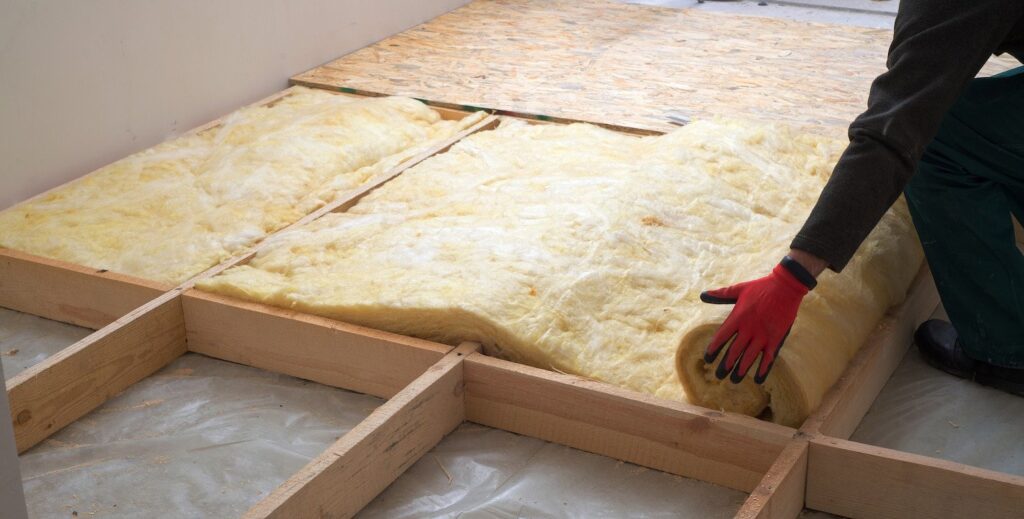

Tips to Extend the Lifespan of Insulation
While the lifespan of insulation is influenced by several factors, there are measures you can take to extend its longevity and maximize its performance. Consider the following tips to help prolong the lifespan of your insulation:
Regular Insulation Inspections
Schedule regular inspections of your insulation to check for signs of damage, moisture accumulation, or pest infestations. Inspections can help you identify potential issues early on and address them promptly, preventing further damage and preserving the insulation’s lifespan.
Maintaining Proper Indoor Humidity Levels
Excessive humidity can contribute to moisture-related problems and mold growth within the insulation. Monitoring and maintaining proper indoor humidity levels can help prevent moisture accumulation and extend the lifespan of the insulation.
Addressing Plumbing and Roof Leaks Promptly
Leaks in plumbing systems or roofing can lead to water damage and mold growth within the insulation. Addressing leaks promptly can help prevent moisture-related issues and preserve the integrity and effectiveness of the insulation.
Sealing Gaps and Air Leaks
Ensuring a well-sealed building envelope can prevent air leaks that compromise insulation performance. Regularly inspect and seal gaps or openings around windows, doors, electrical outlets, and pipes to maximize the insulation’s efficiency and lifespan.
Improving Ventilation and Airflow
Proper ventilation and airflow within your building can help prevent moisture accumulation and excessive humidity, reducing the risk of damage to the insulation. Ensuring that attics, crawl spaces, and other enclosed areas have adequate ventilation can extend the lifespan of insulation.
Avoiding Storage in Insulated Spaces
Avoid storing items directly on or against insulation materials. This can compress or damage the insulation and reduce its effectiveness. Leave sufficient space between stored items and the insulation to maintain its intended performance.
Removing Debris or Vegetation Near Insulation
Debris, leaves, or vegetation near insulation can trap moisture and promote the growth of mold or mildew. Regularly clearing debris and maintaining a clean environment around the insulation can help prevent moisture-related damage and extend its lifespan.
Replacing Damaged Insulation
If you notice significant damage to your insulation, such as physical deterioration or mold growth, it may be necessary to replace the affected sections. Promptly replacing damaged insulation can prevent further issues and ensure the insulation continues to perform effectively.
Upgrading to More Durable Insulation Materials
Consider upgrading to more durable insulation materials if you are experiencing premature deterioration or if you want to improve the overall lifespan of your insulation. Newer insulation materials often offer enhanced durability, resistance to pests and moisture, and improved performance.
Consulting with Insulation Professionals
When in doubt, consult with insulation professionals to assess your insulation’s condition, recommend appropriate maintenance measures, or discuss possible insulation replacements. Professionals can provide valuable insights based on their experience and expertise, helping you make informed decisions to extend the lifespan of your insulation.
By following these tips and implementing proper maintenance practices, you can maximize the lifespan of your insulation, ensuring long-term energy efficiency, comfort, and cost savings.
Importance of Up-to-Date Insulation
Having up-to-date insulation in your home or building is crucial for various reasons. Beyond its role in maintaining energy efficiency, there are several key benefits associated with having properly installed and well-maintained insulation.
Energy Savings
One of the primary reasons for investing in insulation is its ability to improve energy efficiency. By forming a barrier against heat transfer, insulation helps to keep your home or building cool in the summer and warm in the winter. Properly insulating your space can significantly reduce your reliance on heating and cooling systems, leading to substantial energy savings and lower utility bills.
Improved Comfort and Indoor Air Quality
Insulation contributes to improved comfort by helping to maintain consistent temperatures throughout your space. It reduces drafts, cold spots, and hot spots, providing a more even distribution of heat or cool air. Additionally, insulation can help reduce noise transmission, contributing to a quieter and more comfortable living or working environment.
Furthermore, insulation can enhance indoor air quality by reducing the infiltration of outdoor pollutants and allergens. By preventing air leaks and effectively controlling moisture, insulation helps to create a healthier indoor environment for occupants.
Reduced Environmental Impact
Investing in efficient insulation is an environmentally responsible choice. By reducing energy consumption, insulation helps to lower greenhouse gas emissions and decrease your carbon footprint. It contributes to sustainable practices by conserving natural resources and promoting environmental stewardship.
Prevention of Moisture Damage
Insulation plays a crucial role in preventing moisture-related issues within your walls, ceilings, and floors. It helps to control and manage moisture by preventing condensation, mitigating humidity levels, and acting as a barrier against leaks or water intrusion. Properly installed and maintained insulation can protect your building from moisture damage, such as mold growth, rot, or structural deterioration.
Enhanced Fire Resistance
Many insulation materials have inherent fire-resistant properties, providing an added layer of protection in the event of a fire. Insulation can help contain the spread of flames and inhibit the ignition of combustible materials within walls or ceilings. Selecting insulation materials with appropriate fire ratings can significantly enhance the fire resistance of your space, improving overall safety.
Increased Property Value
Up-to-date insulation can boost the value of your property. Energy-efficient features, including effective insulation, are desirable to potential buyers or tenants seeking homes or buildings with reduced operating costs and enhanced comfort. Investing in quality insulation not only improves your immediate living conditions but can also potentially increase the market value of your property.
Compliance with Building Codes and Standards
Building codes and energy efficiency standards continually evolve to promote sustainable practices and improve energy performance. Upgrading your insulation to meet or exceed current building codes and standards ensures compliance with regulations and helps future-proof your space against changing requirements. It demonstrates your commitment to operating an energy-efficient building and can facilitate various incentives or certifications.
Protection Against Health Risks
Properly installed and maintained insulation can play a crucial role in protecting against health risks associated with poor indoor air quality. By minimizing air leaks and controlling moisture, insulation helps prevent the growth of mold, mildew, and other pollutants that can trigger respiratory issues or allergies. It creates a healthier living or working environment, promoting the overall well-being of occupants.
Soundproofing Benefits
Insulation materials with soundproofing properties can significantly reduce the transmission of noise from both inside and outside your space. Effective soundproofing insulation can create a quieter living or working environment, especially for those located in noisy neighborhoods or near busy roads. Improved sound insulation contributes to enhanced comfort and productivity.
Long-Term Cost Savings
Investing in quality insulation may require an upfront cost, but it can result in substantial long-term savings. By reducing energy consumption, insulation helps lower utility bills over time. The energy savings can offset the initial investment, resulting in a favorable return on investment. Additionally, insulation longevity reduces the need for frequent replacement, further reducing costs in the long run.
Having up-to-date insulation offers numerous benefits, from energy savings to improved comfort and environmental impact. Ensuring that your insulation is properly installed, well-maintained, and meets current standards can help you enjoy these advantages and protect your investment in the long term.
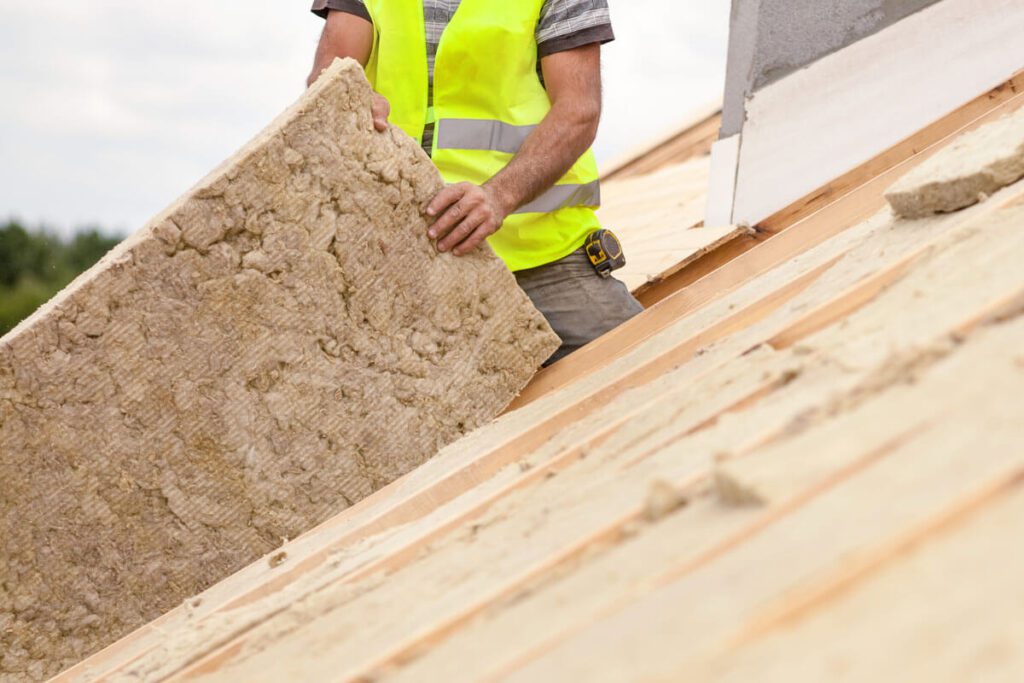

When to Consider Insulation Replacement
While insulation is designed to last for many years, there are situations where replacement becomes necessary. Being aware of the signs and circumstances that may warrant insulation replacement can help you make informed decisions and maintain optimal energy efficiency and comfort in your space.
Insulation Lifespan Exceeded
The lifespan of insulation materials can vary, with some lasting longer than others. If your insulation has reached or exceeded its expected lifespan, it may not perform as effectively as it should. Consider replacing the insulation to ensure maximum energy efficiency and to take advantage of newer, more effective insulation materials and technologies.
Significant Deterioration or Damage
Visible damage, such as crumbling, tears, or disintegration of insulation, indicates significant deterioration. Insulation that is no longer intact or has compromised insulating properties should be replaced promptly to maintain proper efficiency and to protect against potential health risks.
Energy Efficiency Declined
If you notice a significant decline in the energy efficiency of your space, despite proper maintenance and insulation installation, it may be an indication that your insulation is no longer performing optimally. In these cases, replacing the insulation may be necessary to restore energy efficiency and comfort.
Mold or Mildew Problems
Persistent mold or mildew growth within the insulation can indicate a moisture-related issue that warrants insulation replacement. If moisture issues have not been successfully resolved, mold growth may persist and compromise the insulation material’s integrity. Replacing the insulation is essential to prevent further mold growth and to maintain a healthy indoor environment.
Pest Infestations
Insulation that has been severely damaged or compromised by pest infestations may need to be replaced. Pests, such as rodents or insects, can nest, chew through, and contaminate insulation, rendering it ineffective. Addressing the underlying pest infestation and replacing the damaged insulation is crucial to restore insulation performance and ensure a pest-free environment.
Remodeling or Renovation Projects
If you are planning a major remodeling or renovation project that involves the removal or disturbance of existing insulation, it is advisable to consider insulation replacement. New construction or renovation projects present an opportunity to upgrade to more efficient insulation materials, optimize insulation installation, and ensure compliance with current building codes and standards.
Upgrading to More Efficient Insulation
Advancements in insulation technology and materials have led to more efficient and innovative options. If you have older or less efficient insulation, it may be worthwhile to consider upgrading to newer, more energy-efficient insulation materials. Upgrading can result in improved insulation performance, energy savings, and increased comfort.
Changes in Building Regulations
Building codes and regulations are continually evolving to promote more sustainable and energy-efficient construction practices. If there have been updates or changes to building regulations since your insulation was installed, it may be necessary to upgrade or replace the insulation to comply with the new requirements.
Indoor Air Quality Issues
Persistent health issues or respiratory problems that are potentially related to poor indoor air quality may require insulation replacement. Insulation materials that have been compromised by mold growth, water damage, or other factors can release harmful particles into the air, negatively impacting indoor air quality. Replacing the affected insulation with cleaner and healthier alternatives can help improve indoor air quality.
Uncomfortable Living Conditions
If you experience discomfort in your space, such as uneven temperatures, drafts, or excessive noise, it may be an indication that your insulation is not performing optimally. Replacing the insulation can help address these comfort issues and provide a more pleasant living or working environment.
Considering these factors can help you determine if insulation replacement is necessary and when it is an appropriate time to invest in new insulation. Consulting with insulation professionals can provide further guidance and expertise to assist you in making the best possible decision for your space.
Professional Evaluation and Replacement
When it comes to insulation evaluation and replacement, it is essential to engage the services of qualified professionals. Certified insulation contractors have the expertise and knowledge to properly assess the condition of your insulation and recommend appropriate measures for replacement, if necessary. Here are some key considerations when seeking professional evaluation and replacement services:
Hiring Certified Insulation Contractors
Choosing certified insulation contractors ensures that you are working with professionals who have the appropriate training and expertise in insulation evaluation and replacement. Certification ensures that the contractors are knowledgeable about industry standards, installation techniques, and building codes. Hiring certified contractors minimizes risks and ensures quality workmanship.
Insulation Inspection and Assessment
Professional insulation contractors will conduct a thorough inspection and assessment of your insulation. They will examine the condition of the insulation, identify any issues or damage, and determine if replacement is necessary. The assessment process involves evaluating the insulation material, checking for moisture-related issues, inspecting for pest infestations, and identifying other factors that may impact insulation performance.
Choosing the Right Insulation Material
Insulation professionals can help you select the appropriate insulation material based on your specific needs, building characteristics, and local climate conditions. They can assess the benefits and drawbacks of different insulation materials and recommend the most suitable option for your insulation replacement project.
Proper Installation Techniques
Professional insulation contractors have the knowledge and experience to ensure proper installation techniques. They understand the importance of adequate coverage, sealing gaps, and providing proper ventilation to maximize insulation performance. Proper installation techniques contribute to the longevity and effectiveness of the insulation.
Considerations for DIY Vs. Professional Installation
While some insulation projects may be suitable for do-it-yourself (DIY) installation, complex or large-scale projects are best left to professionals. DIY installation may result in improper installation, inadequate coverage, or gaps that compromise insulation performance. Engaging professional installation services ensures that the insulation is installed correctly and meets industry standards.
Costs and Return on Investment
It is essential to consider the costs and potential return on investment when evaluating insulation replacement options. Professional insulation contractors can provide accurate estimates of the costs involved in insulation replacement, including materials and labor. They can also help you assess the potential energy savings and financial benefits of upgrading to more efficient insulation materials.
Choosing Environmentally Friendly Insulation
If environmental sustainability is a consideration for you, insulation professionals can guide you in selecting environmentally friendly insulation materials. They can provide information on insulation materials with high recycled content, low environmental impact, and low embodied energy. Choosing environmentally friendly insulation options contributes to sustainability goals and aligns with green building practices.
Insulation Removal and Disposal
In cases where insulation replacement involves the removal of existing insulation, professionals can safely remove and dispose of the old insulation. They understand the proper procedures for handling and disposing of different insulation materials, including those that may be hazardous, such as asbestos-containing insulation. Proper removal and disposal contribute to a safe and clean environment.
Permits and Building Regulations
Professional insulation contractors are familiar with local building regulations and permit requirements. They can guide you through the necessary paperwork and ensure that your insulation replacement project complies with all applicable regulations. Complying with building codes and obtaining the necessary permits protects you from potential legal or safety issues.
Warranty and Guarantees
Insulation professionals often provide warranties or guarantees for their work. These warranties ensure that the installation and insulation materials meet quality standards and are covered for a certain period. Professional insulation contractors can explain the terms and conditions of warranties and guarantees associated with the insulation replacement project.
Engaging professional evaluation and replacement services ensures that your insulation replacement project is carried out with expertise, precision, and compliance. Professionals provide the necessary knowledge and skills for a successful insulation replacement, allowing you to enjoy the benefits and peace of mind that comes with properly installed and functioning insulation.
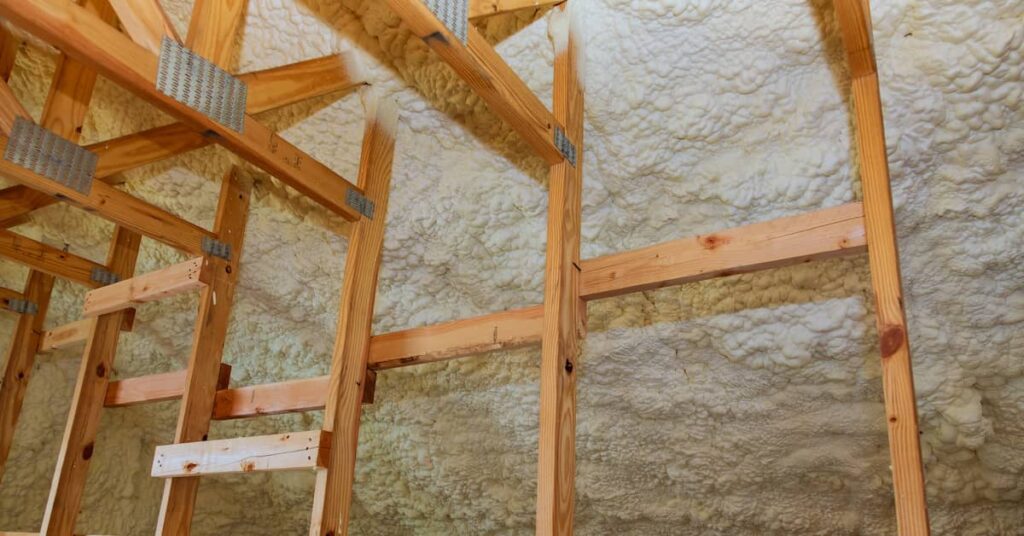

Conclusion
Insulation plays a vital role in maintaining energy efficiency, comfort, and the overall performance of buildings. Understanding the factors that affect the lifespan of insulation, the signs of deterioration, and the importance of up-to-date insulation empowers you to make informed decisions regarding your insulation needs.
By considering factors such as insulation material type, environmental conditions, installation quality, and maintenance practices, you can maximize the lifespan of your insulation. Periodic inspections, addressing moisture and pest issues promptly, and making necessary repairs or replacements contribute to the longevity of insulation.
It is important to recognize when insulation replacement is necessary. Factors such as exceeded lifespan, significant damage, declining energy efficiency, mold or mildew problems, and pest infestations are indications that replacement may be needed. Consulting with insulation professionals ensures proper evaluation, material selection, installation techniques, and compliance with building codes.
Having up-to-date insulation offers numerous benefits, including energy savings, improved comfort and indoor air quality, reduced environmental impact, and increased property value. It also protects against moisture damage, enhances fire resistance, and provides long-term cost savings. With proper evaluation, installation, and maintenance, you can maximize the performance and lifespan of your insulation, ensuring a comfortable and energy-efficient space for years to come.


